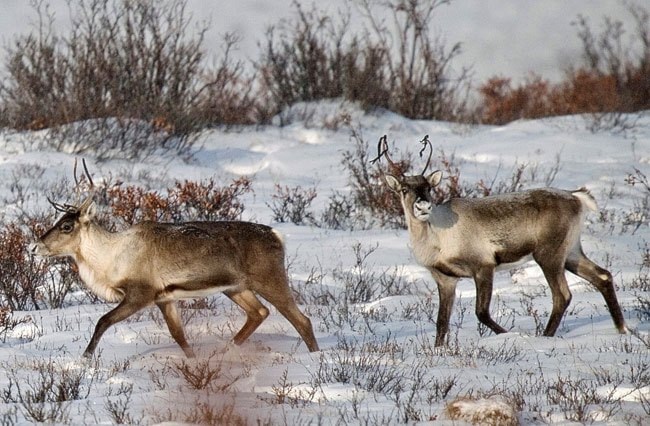Let’s be very clear, a voluntary ban on hunting caribou cows is no ban at all.
This week, a deal was struck to “conserve” the Porcupine caribou herd.
The herd is in steep decline, and is believed to have fallen below 100,000 animals from an estimated 178,000 in 1989.
How far below 100,000 animals is unknown - nobody has a firm bead on the herd’s population because an aerial census has been foiled for years by bad weather.
But there is agreement there are fewer animals than there used to be. Far fewer animals, in fact.
The problem is well known, and the herd’s management board has been trying to hammer out an arrangement to ensure the herd doesn’t collapse, as far too many herds across the northwest have done.
After six years of haggling, a deal was signed this week.
It isn’t much of a deal. It actually relaxes hunting restrictions.
Until the management agreement was signed, the Yukon government had forbidden all hunters, native and nonnative, from shooting cows. However, that was a temporary measure until this plan was passed.
Protecting cows is important because each one shot costs the herd 23 caribou over 10 years - it represents an exponential loss to the herd, which resembles, when considered in its entirety, a larger living organism.
Now, a plan has been approved. And it makes the ban on cows voluntary, not mandatory.
So, in the end, the plan to preserve the Porcupine herd may end up hurting it.
Part of the reason for this is simple human optimism. The herd has been pegged at more than 90,000 animals, a figure that may or may not be accurate.
Another stab at an accurate census will be made this year. If the herd is found to have dropped to 80,000 animals, a mandatory ban on cows would kick in.
Of course, such a hunting restriction would have to be taken on faith. The herd confounds management because it migrates over more than 1,000 kilometres of rugged, sparsely populated wilderness spread across two countries, overseen by three regional governments and five native governments, many of which lack the ability or will to actually determine the number or sex of the animals being shot.
Currently, it’s estimated 4,000 animals are harvested every year.
In 1989, that represented 2.2 per cent of the overall herd. Today, that same harvest, if accurate, represents 4.4 per cent.
But if you want to get a sense of the cumulative impact on the herd, look at the numbers.
After 10 years, there are 88,000 fewer caribou crossing Kongakut River en route to the calving grounds in the Alaska National Wildlife Refuge. In a decade, it has been cut in half.
The numbers should send a cold chill through everyone, native and nonnative - especially given the sketchy population estimates.
Now, every year hunters take a much larger chunk of the herd. So, at the current pace, it probably doesn’t have another decade left in it.
The status quo is not sustainable. But the status quo is what this tepid compromise guarantees.
Our children will judge if this historic six-year exercise in compromise and appeasement was worth it.
But don’t fool yourself. A voluntary ban on hunting cows is no ban at all.
